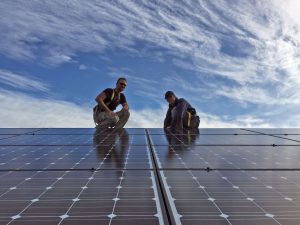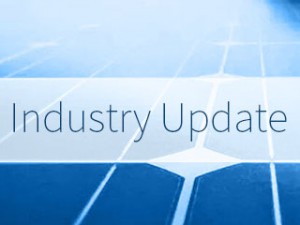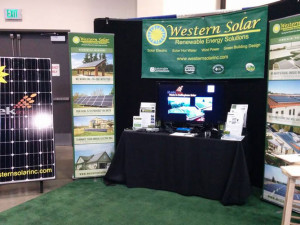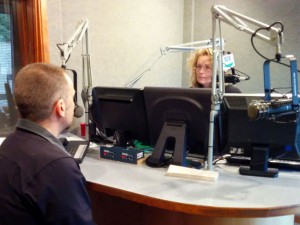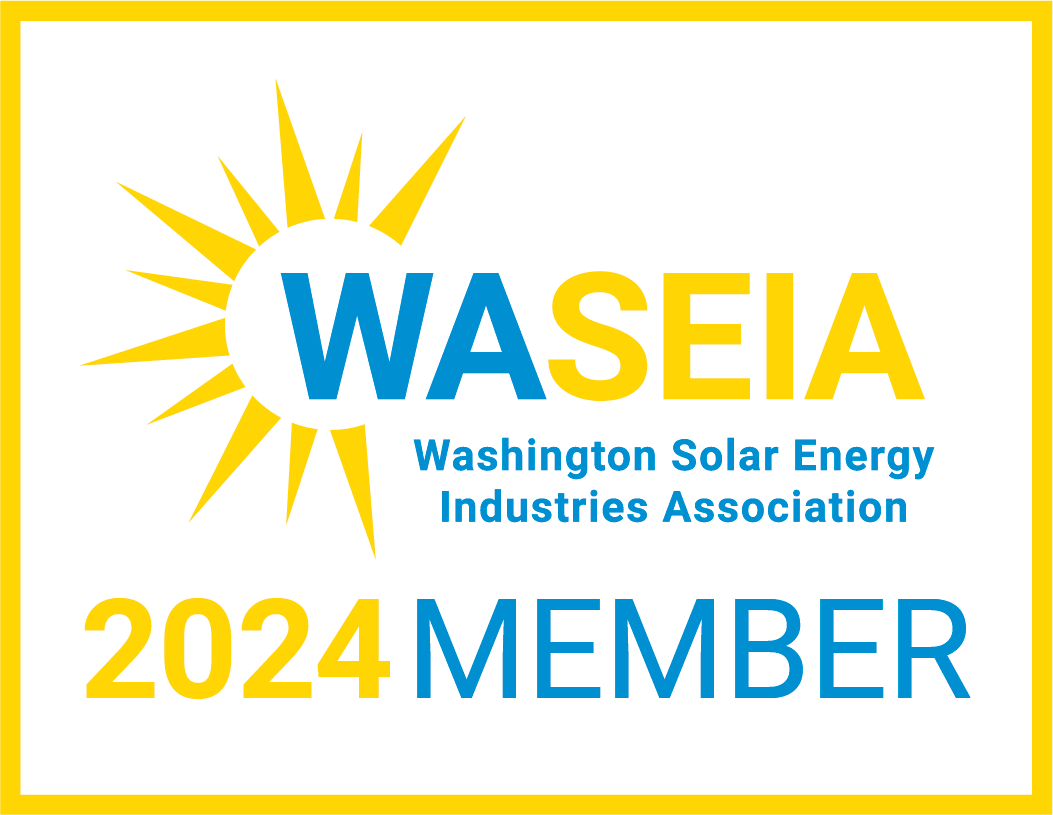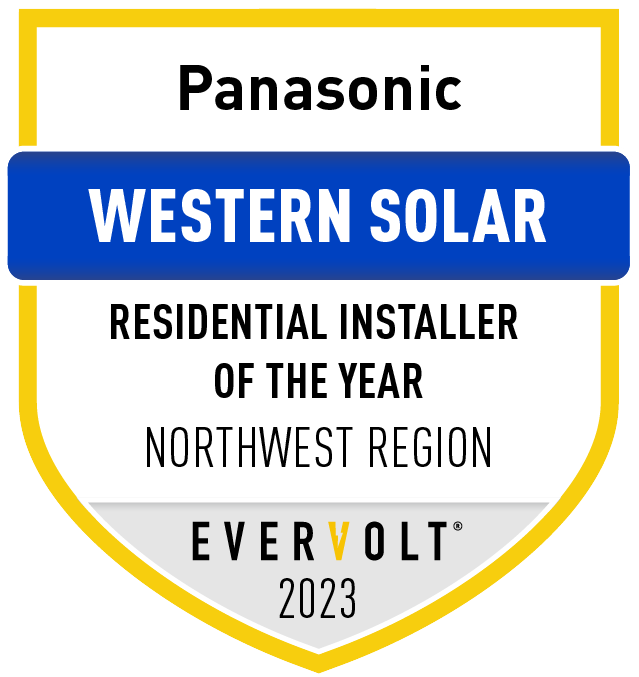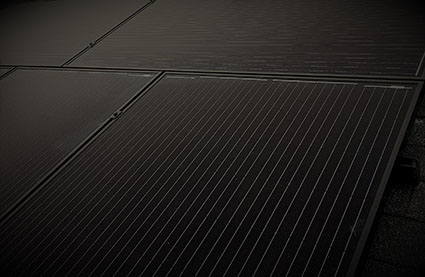
SYSTEM SPECS
Customer: Peto G., Bellingham
System Size: 5.9 kW
Modules: Itek Energy 295W Black on Black, optimized
Inverter: SMA SunnyBoy
Additional Features: TIGO Energy online system monitoring; array skirt
Design Perspective
Markus Virta, System Designer
Peto’s project had some fun design elements to it. For starters, he has a three story roof with uneven access. Just getting on the roof to assess its health, solar resource, and dimensions was a bit tricky. The roof itself was nearing 20 years old and had some substantial moss growth on the northern slope. That is common in Bellingham and throughout the Puget Sound. We had the discussion about re-roofing and I illustrated my concern for future added cost should we need to remove our system to re-roof down the line. We often recommend customers have at least 10-15 years of usable roof life prior to installing solar. For most homes the cost for us to come out to remove an existing array while a roof is being replaced then re-install the system after comes to around $2,500-$3,500 after tax. Peto agreed that being proactive about his roof would be the best decision for his home.
After a succinct discussion with Peto regarding the technical options in front of him (and a healthy debate about the advantages and drawbacks of DC buck converters/DC Optimizers and Microinverters) we landed on what equipment we would be specing into the job. Of course this came after my onsite solar measurements and careful cash flow analysis of what had the best financial advantage. We landed with a DC Optimized (TIGO) system with SMA SunnyBoy inverter. This yielded approximately 2% higher site efficiency over the rest of equipment we were considering with the most competitive cost/watt of the bunch. A clear winner.
Peto had concern about how his future array would retrofit onto his roof. We agreed that Itek Energy’s Black on Black (BoB) 295 watt solar modules would be the best aesthetic choice. We also decided to include a front edge wind guard which helped to blend the solar array onto the roof itself. The end product is, as many well designed solar systems, so well integrated into the roof that it often goes unnoticed.
I am pleased with how this installation came out. Our team did an excellent job with conduit routing down from a very tall roof. This can be an afterthought for many installers who are rushing from one job to the next. We recognize that our installations are often the focal point of our customer’s homes and feel strongly about our responsibility for effective and beautiful system design.
Customer Perspective
Before you considered installing solar, had you taken any other steps to lower your electric consumption?
I’ve been a major proponent of conservation, reducing my footprint, and the reduce-reuse-recycling principles since I was in my 20s—going back to my first Earth Day in 1990. So, finally, in 2016, when I was 47 and finally getting to invest in my first house with my partner, we looked at what we could do to keep bills down. LEDs, lights off in unused rooms, changing out our furnace and water heater for newer energy-efficient ones, any simple thing to keep down usage and cost.
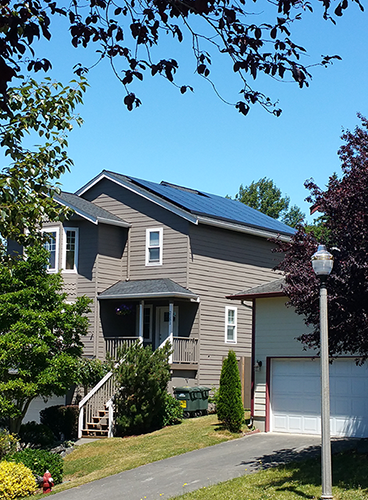
Peto’s completed system
What motivated you to consider solar?
I’ve had my eye on solar for a long time and hoped it would take off and replace the dirty energy sources in the world, but it really couldn’t be considered, personally, until I lived in a house—and it took me a long time to get there. Then, a year after moving in to the new home, I started making plans to finally go after my first decades-old long-term goal of owning an electric car. It was during my EV research that solar kept coming back into my peripheral, and it made more and more sense to have the two things coincide since I’d be charging my vehicle at home. I had also switched us over to 100% green power with PSE early in 2017, but during this process, I realized it made more sense to generate my own energy rather than pay an extra 10% on my bill each month for the green energy. Once I had done my research, it was just too obvious that solar was the best decision. Between the energy credits and the financial incentives from both state and federal, the investment made a lot of sense to do this year before any of those things possibly went away—our current federal government has already made too many steps toward negating the positive strides made previously for our environment.
Have you gotten any feedback from friends, family, or neighbors about your system?
Everyone in my family was interested in hearing about it as well as anyone who heard me mention it. Even though solar isn’t new at this point, I think we as a society just generally think that you move somewhere and sign up for electricity with whatever utility is in your area and that’s it. There’s not a lot of thought to where the electricity comes from, unless you’re someone like me. Most likely, just as I was before the research, people consider it a luxury as well, especially if you don’t own a house. But once I tell people about the incentives and production payments that will be coming, and how it becomes obvious that the system will end up paying for itself—that can be exciting for people who don’t know about it.
How did the whole process go? Were there any surprises during the course of the project?
Like anything, there was a learning curve when considering a new process and a new company to work with, and I was doing a lot of research at the same time—not only was I trying to make the EV and the solar install happen within what ended up being weeks of each other, but we had to get a new roof installed before the solar array could go up, and it was a lot to be doing all at once while working a full work week. So I did have a few points of panic and some stumbling blocks, and sometimes my research and waiting for inside connections on the roof to materialize initially delayed my progress with the solar.
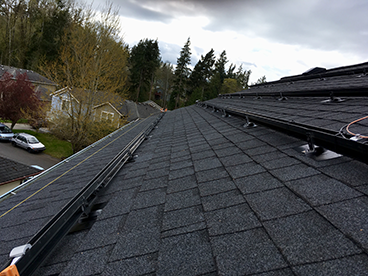
Installing the mounting feet, flashing, and rails
But when it came to Western Solar’s part of the whole process—the research, estimates, paperwork and the actual install—every person involved really tried making the process easier for me and offered plenty of information for me to make an informed decision. At the actual install, we did have to adjust the layout of the array on the fly, so that was a bit of concern at that moment, but it really ended up working out for the better, overall. Now, we are banking future electrical production credits quickly with PSE during the well lit months of May and June and I couldn’t be happier.
Why did you chose Western Solar as your contractor?
I had previously looked into the Tesla Roof, but like their “low-cost” Model 3 EV, the production of the roof was still months-to-years off and the cost was a bit more staggering for not even covering the amount of energy we used each month. I learned about Western Solar when I met Trish at the WS info booth while test driving electric cars at the September 2017 EV Ride & Drive. That planted the seed. Then I met with Markus. He was so well informed and connected to the solar world and had so much good information, plus he wasn’t trying to sell me anything I didn’t need. He even had an array mounted on his house that was down the street from me that I could walk to and see. Also, I’m all about “buying local” when I can, and with their using Bellingham-built Itek modules, the whole right-in-town partnership felt like a great choice. It was. And everyone I worked with during the process was extremely friendly and helpful.
What advice would you give to anyone considering solar for their home or business?
Do the research and then talk to Markus at WS. And then just do it. For cleaner energy AND for all the current financial benefits and incentives. It covers both the environmentalists and those looking out for cost. I was both. So from a real person’s perspective, I did a lot of work and worry over this, but I couldn’t be more satisfied with the end result.

